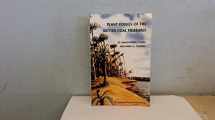
The Palaeontological Association Field Guide to Fossils, Plant Fossils of the British Coal Measures (Palaentology FG Fossils)
Book details
Summary
Description
The most commonly collected plant fossils in Britain are probably those from the Carboniferous Coal Measures. Even so, most identifications of these fossils are approached with trepidation because of the difficulties in interpreting fragmentary specimens, and the lack of easily accessible, illustrated guides. Keys are provided here to the identification of nearly 300 of the most common species found in the British Coal Measures, many of which are illustrated. Also included are notes on the states of preservation of the fossils, and on the relationship of the various dispersed organs to whole plant reconstructions. Stratigraphical and paleoecological notes are included to aid collectors in the broader interpretation of their collections.


We would LOVE it if you could help us and other readers by reviewing the book
Book review



